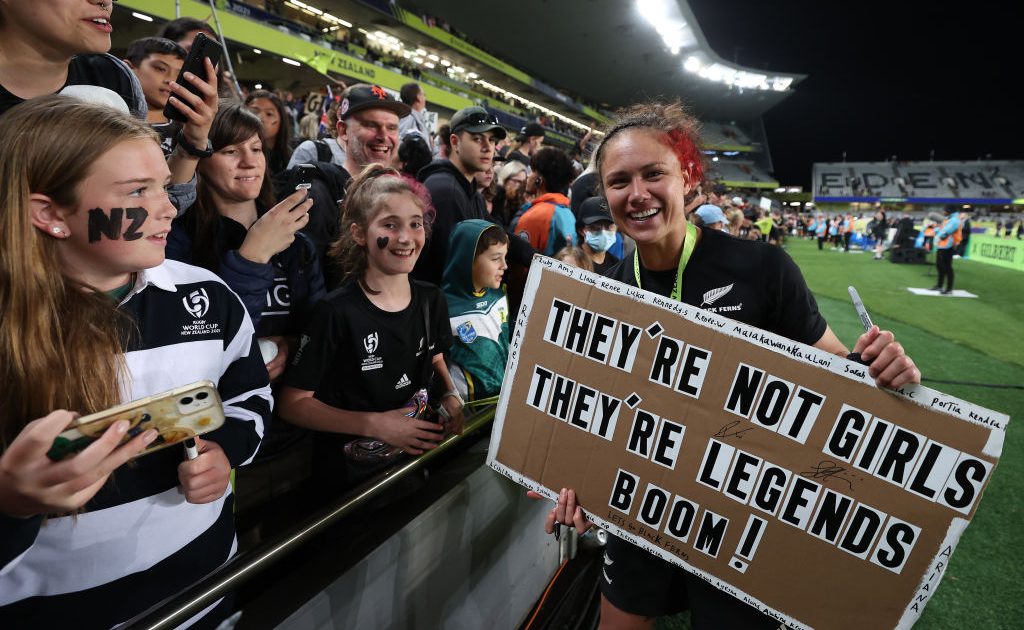NZR reports remarkable rise in women and girls’ participation numbers

As the rugby community in New Zealand continues to move forward after the COVID-19 pandemic, New Zealand Rugby has revealed a 20% increase in women and girls’ rugby participation.
It seems that the legacy left behind by the Black Ferns’ inspirational run to Rugby World Cup glory last year is already having an impact across Aotearoa, with 29,448 women and girls playing the sport.
The headline-grabbing advancement in the female game is one of the positives from NZR’s findings which also includes a 7% increase in the number of community rugby players in 2023.
Teenage participation is also up 11% to 34,173, coach registrations are up 9% and referee numbers have increased to an impressive 1,564 across the country.
NZR General Manager Community Rugby, Steve Lancaster, described these findings as pleasing after the “first normal rugby season in four years.”
“Covid completely changed community sport across the country, and we’ve really only just completed our first normal rugby season in four years,” Lancaster said in a statement.
“We’re pleased with how the game is recovering. Like all sports we still face challenges in the community game, in particular, junior boys’ numbers are not back to where they were pre-Covid in some parts of the country.
“We’ve spent some time understanding the issues and, along with teenage participation, it will be a focus of ours moving forward.”
Black Ferns including Ruby Tui, Sarah Hirini, Stacey Waaka and Kendra Cocksedge embodied their roles as pioneers of the women’s game during last year’s World Cup in New Zealand.
Even as recently as last month, the Black Ferns were seen inspiring the next generation with heart-warning interactions after the full-time siren.
Their efforts are clearly making an impact with the number of junior girls playing club rugby increasing by 36% to 11,540 compared to the findings before Covid.
Senior women’s club rugby also saw participation numbers skyrocket by 40% on 2019 to an incredible 4,515 players.
“An increasing focus since 2020 has been on getting more women and girls involved in club rugby where they’ll play for a full season as opposed to one-off festivals and tournaments,” Lancaster added.
“That means more games and, most importantly, a more meaningful rugby experience enjoying all that’s great about community rugby.”
In line with World Rugby’s global recommendations. NZR will also extend the reduced tackle height initiative in club rugby until 2025.
As part of this policy, the first tackler will need to make initial contact below the sternum as they target the belly area. The trial, according to Lancaster, has improved the safety and quality of games.
“Our participants have told us that want the tackle area of the game to be safer and that’s been our focus. The resounding feedback we’ve heard from our players, coaches and referees is that they understood the reason for change and that’s been critical to its success.
“We appreciate it’s an adjustment to make and our community participants can be proud of the way they have adapted and played the game this season. There’s still room for improvement, but we’re seeing the majority of first tackles below the sternum, more offloads and faster games.”


















































Excellent.